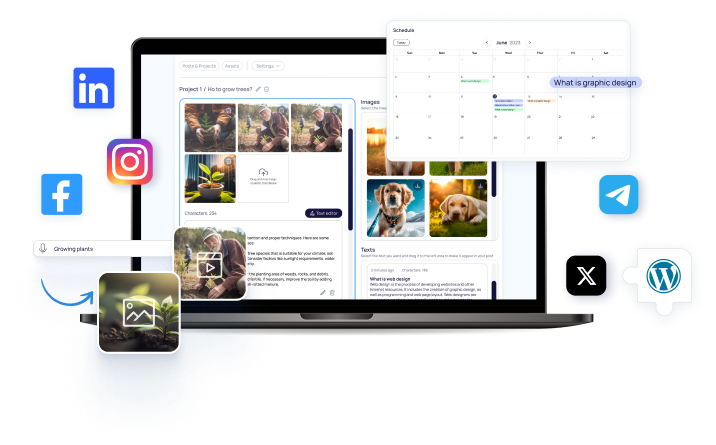Bridging the Gap Between AI Sales Hype and Real ROI: A Guide for Revenue Leaders

Brief news summary
Around 2019, C-suite leaders prioritized updating CRM systems, but with AI’s rise, focus shifted to maximizing ROI through effective AI use in sales. The problem of “AI-washing” emerged, where companies touted AI transformation without real results. Revenue leaders now emphasize starting with clear AI goals, such as using AI assistants to prepare calls and summarize accounts, AI agents for workflows like routing and scheduling, and AI SDRs for automating prospecting—while complex deals still need human input. Efficiency alone isn’t enough; prioritizing revenue-driving tasks is essential. Best practices include automating last-mile actions before customer engagement, consolidating tech stacks, and seamless AI integration. A four-metric scorecard—quality, adoption, efficiency, and business impact—measures true ROI. Analysis of nearly 2,000 G2 reviews shows AI SDRs and assistants excel in SMBs and midmarket, whereas AI agents suit enterprises better. Successful adoption aligns AI tools with customer journey stages, drives user adoption, and targets measurable outcomes. A pragmatic 30-day CRO playbook recommends auditing AI tools, automating workflows, tracking impact, and consolidating platforms. Strategic AI adoption moves sales beyond hype toward genuine transformation, accelerating sales velocity and revenue growth.Around 2019, prior to the AI surge, C-suite leaders mainly worried about getting sales executives to accurately update the CRM. Today, those concerns have expanded along with their technology stacks. Now leaders ask: “What’s the ROI of our AI sales platforms?Is our team fully leveraging this technology?And how do we still get them to update the CRM correctly?” ROI has become the obsession in software, with AI infiltrating roadmaps, revenue meetings, and LinkedIn posts. Yet, despite promises of smooth sales cycles, few pipelines are truly frictionless—showing a gap between AI hype and actual commercial results. This gap is known as AI-washing: when teams claim AI is transforming sales, but workflows, habits, and revenue data say otherwise. This message is for CROs and revenue leaders seeking a realistic AI roadmap rather than hype. We’ll compare AI sales assistants, AI sales agents, and the elusive AI SDR to highlight where true effectiveness outshines mere efficiency and how to prove ROI without convoluted attribution. ### Reality in Revenue Teams Today Three SaaS revenue leaders shared key insights: - AI tools are embedded everywhere except crucially in the buying journey. Co-pilots and dashboards abound, but pipeline velocity rarely improves because efficiency without prioritization is just showmanship. Revenue leaders need fewer steps to decisions, not more AI tasks. #### 1. Start With the Verb, Not the Vendor B2B reps and buyers drown in buzzwords. The quickest way to break through is to translate every AI claim into a “job to be done. ” If the job isn’t clear, neither is the value. - **Assistants help** by surfacing context, summarizing accounts, drafting emails—forming a prep layer that speeds readiness. - **Agents act** by orchestrating multi-step workflows like qualifying inbound leads, enriching records, scheduling, updating CRM, and nudging next steps—when well-designed, they are orchestration tools, not toys. - **AI SDRs “sell” on paper** by automating prospecting and triggering communications but still require humans for discovery and negotiation. Treat AI SDRs as capacity enhancements, not headcount replacements. Jonathan Pogact, VP Marketing at Seamless. ai, advises mapping AI tools to customer journey stages rather than plugging roles into org charts—ensuring assistants and agents sharpen sellers and tie to measurable steps. #### 2. Efficiency is a Coupon; Effectiveness is the Catalyst The industry touts “giving time back, ” but the true value is “return on time, ” or doing the right activities, the right way, in the right order. Efficiency cuts minutes; effectiveness eliminates bottlenecks. Target AI where it breaks chokepoints, such as filtering unqualified inbound leads or clearing stalled proposals. Eric Gilpin, CRO of G2, stresses: > “I don’t want to be ‘efficient. ’ I want to be effective; doing the right things, the right way, in the right order. ” Best practices include automating customer-near “last mile” workflows first (e. g. , booking meetings, demos, signing orders) for clear ROI, consolidating fractured tech stacks for smoother adoption, and embedding AI seamlessly so reps don’t need to learn new portals—maximizing use. #### 3. Measure the Work, Not the Wow Hype sounds like “AI-powered. ” Revenue sounds like measurable lift in key metrics such as meetings booked. Effective measurement involves a four-metric scorecard: - **Quality (offline):** Human-verified accuracy, relevance, tone, clarity before rollout.
- **Adoption (behavioral):** Weekly active users and usage retention; <10–20% adoption means no real impact. - **Efficiency (operational):** Time per task and process cycle times (useful but not headline metrics). - **Business Impact (commercial):** Improved response rates, booked meetings, stage conversion, opportunities created and closed. Tyler Phillips from Apollo. io highlights that impact is easier to prove closest to customer outcomes—AI-driven outreach yielding immediate replies produces the clearest causal connection. ### Common Pitfalls in AI for Sales - **Automating the wrong tasks:** Avoid automating tasks that don’t represent the highest-value use of seller time or tie directly to revenue. - **Under-prepared reps:** Buyers shortlist vendors before calls; generic outreach ignoring customer signals wastes opportunity. Use assistants to synthesize buyer context and optimize discovery questions. - **Feature-fit mismatch:** Many users misunderstand AI features, using only ~20% of what’s feasible. Good products guide users with guardrails and suggestions to avoid frustration. Jonathan Pogact sums it up: > “Busy work gets faster, but revenue doesn’t grow unless you point AI at the right things in the right order. ” ### AI SDRs, Assistants, and Agents: What the Data Shows Analyzing ~2000 G2 reviews reveals: - AI SDRs and assistants excel in SMB and mid-market segments for their simplicity and speed. - AI agents focus on orchestration and complex enterprise workflows, signaling maturation towards “agentic AI. ” - Adoption varies by business size and persona: SMBs prioritize fast lead access, enterprises want integrated compliance and controls. - ROI timelines vary, but user adoption remains a critical uptake indicator. ### From AI Washing to Revenue Reality: Guidance for CROs AI is now the operating system for revenue teams. To harness its power, CROs must: - **Audit the “AI in order to __” gap:** Map each AI tool to a clear sales outcome. - **Automate the last mile:** Start with workflows closest to revenue impact, such as speed-to-lead or SDR-to-AE handoffs. - **Push for adoption parity:** Weekly use by reps is essential to avoid shelfware. - **Align roles with ROI:** Assistants suit SMB rep workflows; agents serve enterprise operations. - **Plan for convergence and consolidation:** Expect vendor rationalization and clearer ROI benchmarks. ### A 30-Day Blueprint for CROs - **Week 1:** Conduct “in order to ___” audit for all AI tools; sunset those lacking measurable outcomes. - **Week 2:** Automate one last-mile workflow with defined agent roles and human checkpoints; pilot with subset of team. - **Week 3:** Implement four-metric scorecard tracking quality, adoption, efficiency, and business impact. - **Week 4:** Consolidate platforms to two core systems; establish governance policies detailing ownership, escalation, branding, and privacy. ### Is Your Sales Team Guilty of AI-Washing? Sometimes, yes. Many sales teams deploy AI tools for efficiency but fail to link them to measurable customer journey steps, resulting in AI-washing—efficiency theater without revenue impact. However, CROs who focus on automating last-mile workflows, measuring real outcomes, and holding vendors accountable turn AI into a genuine performance lever. The ongoing "trial" for sales teams is shifting from AI hype to ROI-proven workflows that accelerate intent-to-decision cycles. Ultimately, cleaner, leaner buyer journeys will triumph over loud AI claims. ### FAQs 1. **What is AI-washing?** Claiming AI adoption without measurable buyer journey outcomes, creating appearance over impact. 2. **Differences between AI SDRs, assistants, and agents?** Assistants help prep and summarize; agents orchestrate workflows like routing and scheduling; AI SDRs automate prospecting but don’t replace nuanced human sales. 3. **How to measure ROI?** Use quality, adoption, efficiency, and business impact metrics aligned to revenue outcomes. 4. **Where is AI adoption strongest?** North America leads, with growing interest in APAC and Europe; emerging but underpenetrated markets include India, Australia, and France. 5. **How to avoid AI-washing?** Audit AI use cases with an “in order to ___” mindset, automate last-mile steps first, align tools with role needs, and emphasize adoption. --- In summary, AI’s role in sales is evolving from buzzword to bona fide growth lever. Success depends on effectiveness over efficiency, close measurement, and disciplined adoption to transform sales teams and drive predictable revenue growth. Are you ready to streamline your path to your ideal customer’s “yes”?
Watch video about
Bridging the Gap Between AI Sales Hype and Real ROI: A Guide for Revenue Leaders
Try our premium solution and start getting clients — at no cost to you

I'm your Content Creator.
Let’s make a post or video and publish it on any social media — ready?
Hot news

We Deployed 20+ AI Agents and Replaced Our Entire…
At SaaStr AI London, Amelia and I delved into our AI SDR (Sales Development Representative) journey, sharing all our emails, data, and performance metrics.

AI Marketing Analytics: Measuring Success in the …
In recent years, marketing analytics has been significantly transformed by advancements in artificial intelligence (AI) technologies.

AI Video Personalization Enhances E-Commerce Cust…
In the fast-changing landscape of digital marketing and e-commerce, personalization has become essential for engaging customers and boosting sales.

Revolutionizing SEO With AI Technology
How AI is Revolutionizing SEO Strategies In today’s rapidly evolving digital environment, effective SEO strategies are more vital than ever

AI-Powered Marketing Platform Enhances Client Acq…
SMM Deal Finder has launched an innovative AI-driven platform aimed at revolutionizing how social media marketing agencies acquire clients.

Intel Set to Buy AI Chip Specialist as It Scrambl…
Intel is reportedly engaged in early-stage discussions to acquire SambaNova Systems, an AI chip specialist, aiming to strengthen its position in the rapidly evolving AI hardware market.

SaaStr AI App of the Week: Kintsugi — The AI That…
Each week, we spotlight an AI-driven app that solves real issues for B2B and Cloud companies.
AI Company
Launch your AI-powered team to automate Marketing, Sales & Growth

and get clients on autopilot — from social media and search engines. No ads needed
Begin getting your first leads today








